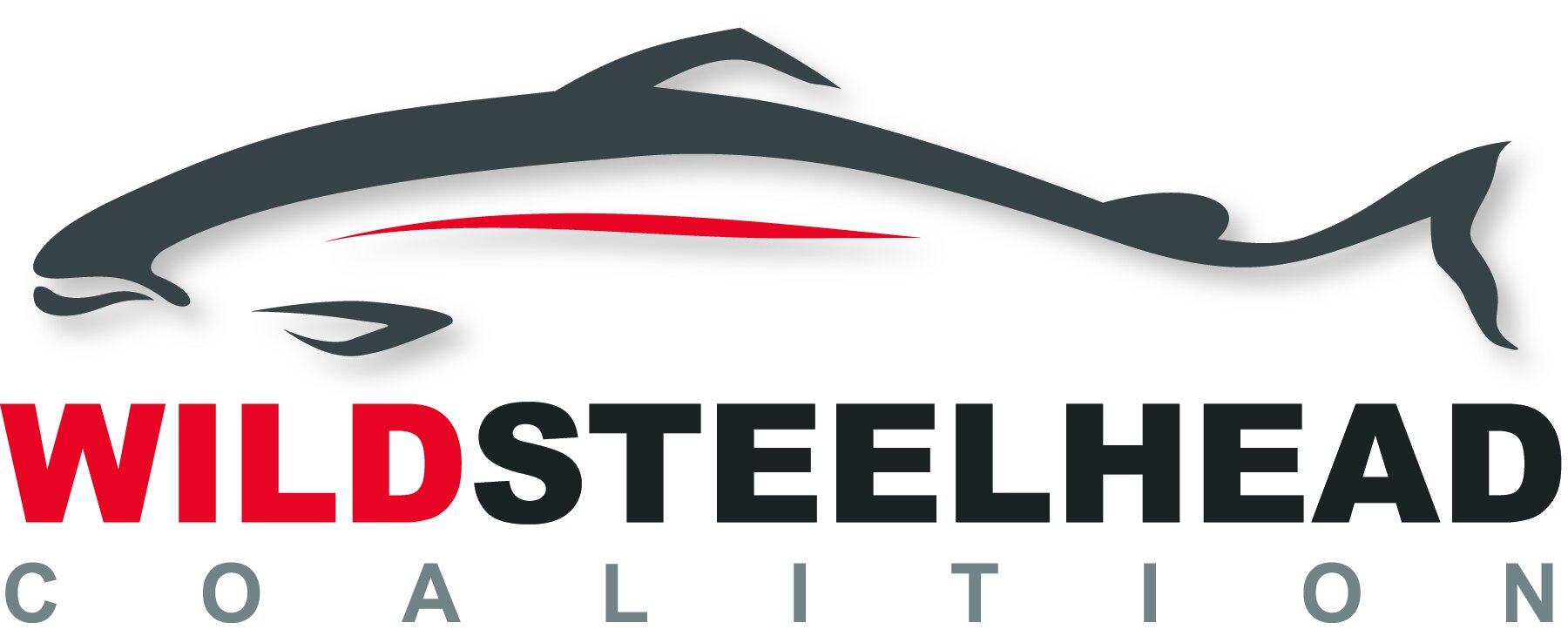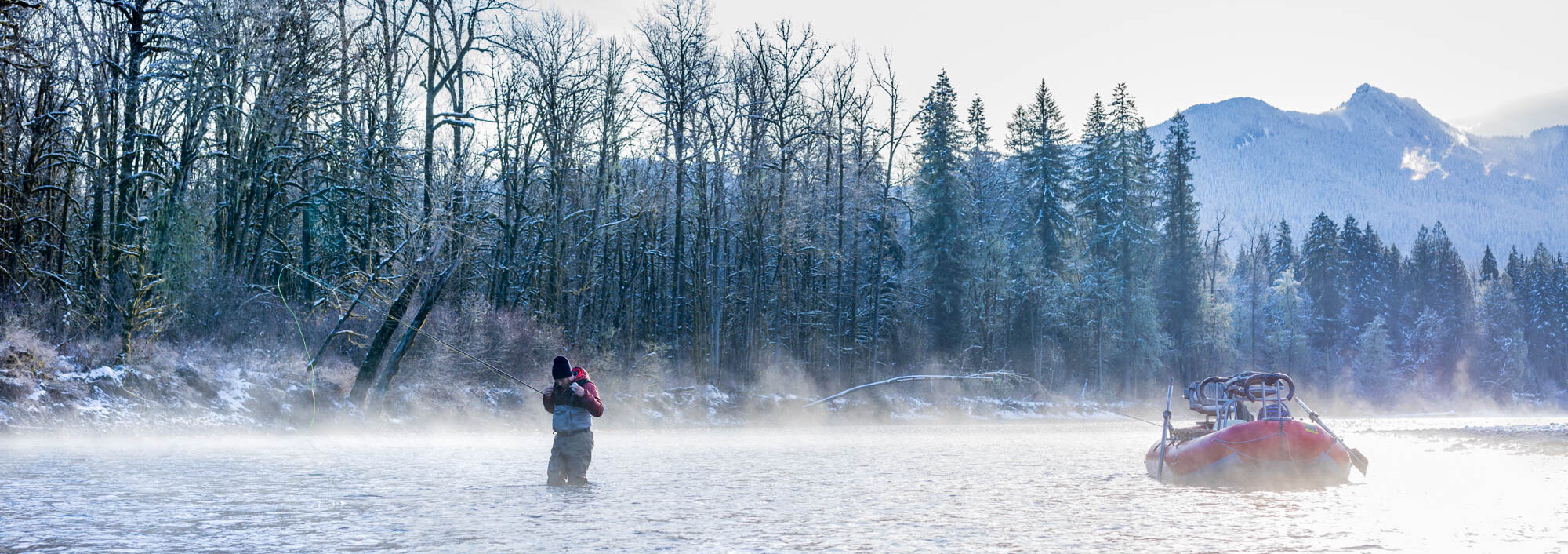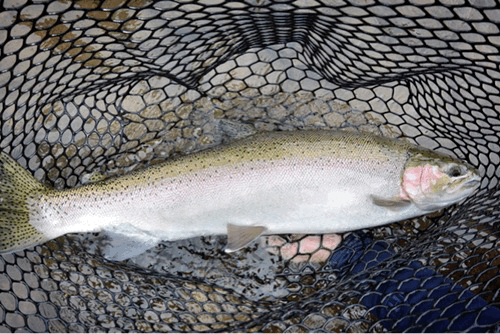An angler trying to make sense of the contradiction is at risk of whiplash. Countless magazine articles, books, websites, and videos demonstrate how to catch these fish with every method and type of gear available. Others tell you exactly when and where to go to find them. Social media exponentially accelerates the hype. The most thoughtful of these voices celebrate the mythology and prestige surrounding this incredible species of migratory trout, but rarely do any of them admit that wild steelhead populations are hanging on by a thread.
Shops, outfitters, travel agencies, and equipment and apparel manufacturers all advertise their products and services with photos of perfect steelhead held out at arm’s length for the camera and breathless accounts of successful days on the water fighting strong fish, but conspicuously fail to mention how run counts have collapsed or how often the watersheds being advertised have missed their escapement goals.
All the while, scientists and conservation organizations keep ringing alarm bells. Management agencies drag their feet as long as possible, preferring to sell fishing licenses and operate business-as-usual seasons as they watch wild steelhead numbers continue to fall on their spreadsheets. Eventually, long after responsible action should have been taken, they will finally limit or close seasons if forced to do so by biological reality or politics. Some anglers celebrate the closures as a win for fragile fish stocks while many others complain about lost business or ruined seasons as if the most important goal is fishing at all costs. Too few of us question if there are enough wild steelhead returning in the first place or what investments are required to truly begin rebuilding their numbers before we lose the last runs fighting to hang on.
The cognitive dissonance of being a steelheader today is painful because the balance between reverence and sorrow is real. Wild steelhead and their home waters are worthy of every ounce of devotion, but we are losing them as generations of overexploitation, habitat degradation, dam building, and irresponsible management slam into a rapidly changing climate.
Today wild steelhead are in a crisis. Many would argue that they have been for a long time, but this year we are seeing emergencies no one can deny. Washington’s iconic Olympic Peninsula and coastal rivers are declining at rates matching the collapse of Puget Sound’s famous steelhead rivers twenty years ago. The North Umpqua summer season was closed due to low fish counts. The Columbia and Snake River Basin is currently tracking at the lowest return on record since fish counting began at Bonneville Dam in 1938. British Columbia’s famous Skeena watershed is seeing the worst run ever documented and the mighty Thompson is down to numbers so low its run of incredible wild steelhead is almost completely gone.
These are the most recent declines, but we shouldn’t allow ourselves to forget the rivers we have already lost along California’s coast, in Puget Sound, on Vancouver Island, in the upper Columbia and Snake Rivers Basins, in the headwaters of the Willamette Basin, and on the North Fork Clearwater, among others.
Let’s be brutally honest: The state of wild steelhead in 2021 is terrifying. Anyone who says otherwise is intentionally avoiding the truth or is not paying attention. In the United States, most populations are protected at some level of the Endangered Species Act and some that aren’t now would probably qualify if a petition were filed. Despair isn’t an unreasonable reaction, but it isn’t what the fish and rivers need. At every stage of their lives, in both fresh and saltwater, wild steelhead are still fighting to survive. Let’s build on their determination and break the grim cycles of loss.
Wild steelhead, and the rivers of the West Coast, need anglers who see the problems, recognize the challenges, and work to make the required solutions happen. Anglers who know they’ll be fishing less because of the situation we have inherited, but who will fight to save wild steelhead with the same passion, grit, and relentlessness we use to catch them. Anglers who will work together to knock down dams and barriers, provide sanctuary and cold water, prioritize the resilient wild fish, and restore their habitat on a scale never seen before. Anglers who are going to force agencies, managers, and policy-makers to take the steps required to restore wild steelhead.
As steelheaders, we know the value of these incredible wild fish and their home waters in ways our fellow citizens don’t always recognize. Every day spent on the water - whether it is on a sprawling glacial river, a steep coastal stream, or a clear desert river deep in a canyon - only reinforces the lesson. Our days on the water, and every encounter with a wild fish, must inspire us to demand the restoration and hard decisions required to ensure there are still wild steelhead returning to the rivers of the Northwest long into the future. No matter what gear we use or how we like to fish, this is the work that defines what it must mean to be a steelheader in the 21st Century.
Anglers see their favorite rivers closing and the fish slipping away. We know this moment is now or never for wild steelhead and we aren’t going to let them disappear on our watch.









